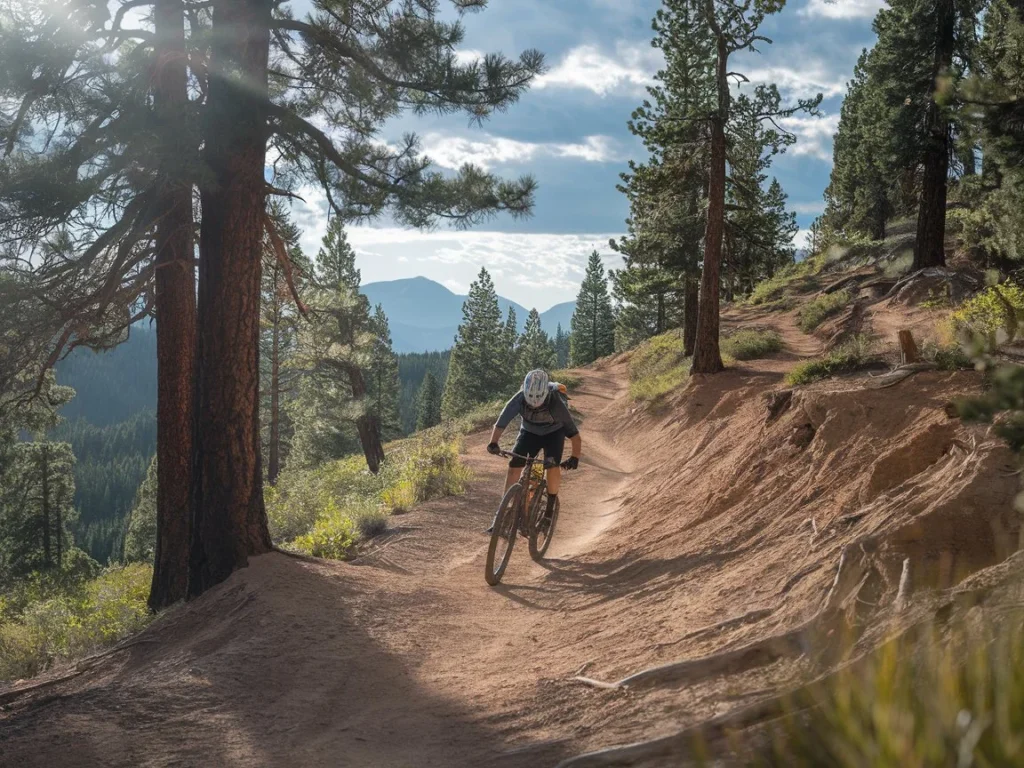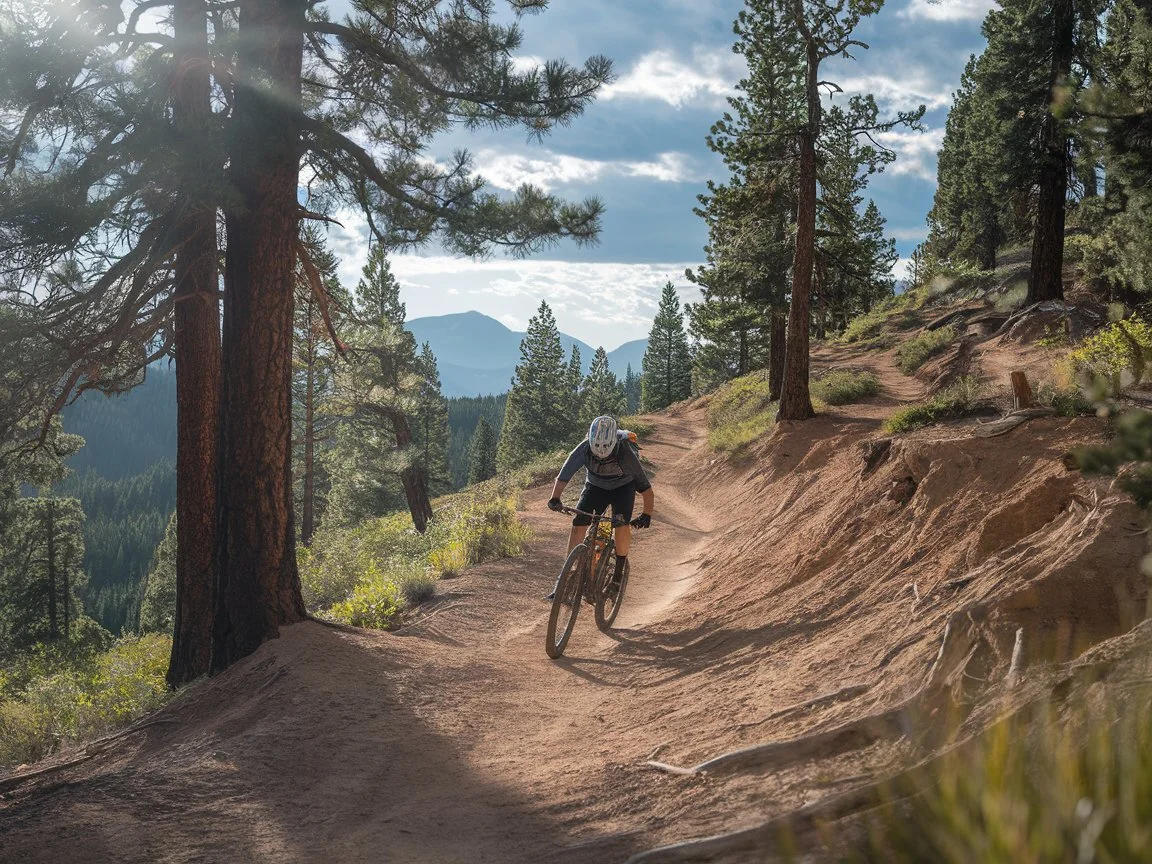
Introduction
Mountain biking is more than just a sport—it’s an exhilarating way to connect with nature and explore the wilderness. Whether you’re cruising through dense forests, navigating rocky terrains, or speeding down steep descents, mountain biking adventures offers a unique blend of adrenaline, physical challenge, and natural beauty. It’s an activity that pushes your limits while allowing you to immerse yourself in the great outdoors.
Beyond the thrill, mountain biking adventures also provides numerous physical and mental benefits. It’s a full-body workout that improves cardiovascular health, builds muscle strength, and enhances balance and coordination. Mentally, it’s a chance to unplug, reduce stress, and enjoy the serenity of nature. This guide will walk you through everything you need to know to embark on your own mountain biking adventure, from choosing the right gear to planning the perfect trip.
1. Choosing the Right Mountain Bike for Your Adventure
The first step to a successful mountain biking adventures is selecting the right bike. The type of bike you choose will depend on the terrain you plan to tackle and your skill level.
- Hardtail vs. Full Suspension: Hardtail bikes, which have front suspension only, are lightweight and efficient for smoother trails. They’re also more affordable and easier to maintain. On the other hand, full-suspension bikes, with both front and rear suspension, are ideal for rough, technical terrains. They provide better control and comfort on rocky or uneven trails but tend to be heavier and more expensive.
- Tire Choices: Tires are crucial for traction and stability. For rocky trails, opt for wider tires with aggressive treads. If you’re riding in muddy conditions, look for tires with deep, spaced-out knobs. For dry, hard-packed trails, smoother tires with smaller knobs will suffice.
- Other Essential Gear: A well-fitted helmet is non-negotiable for safety. Gloves improve grip and protect your hands, while hydration packs ensure you stay hydrated on long rides. Protective pads, such as knee and elbow guards, are recommended for technical or high-speed trails.
2. Top Mountain Biking Trails for Different Skill Levels
No matter your skill level, there’s a trail out there for you. Here’s a breakdown of trails suited for beginners, intermediates, and advanced riders.
- Beginner-Friendly Trails: These trails are perfect for those new to mountain biking. They feature smooth, well-marked paths with gentle slopes and minimal obstacles. Examples include green-rated trails in national parks or local bike parks.
- Intermediate Trails: For riders with some experience, intermediate trails offer a mix of technical sections, switchbacks, and moderate elevation gains. These trails often require better bike handling skills and endurance.
- Advanced Trails: Advanced trails are designed for seasoned riders seeking a challenge. They include steep descents, rock gardens, and high-adrenaline features like jumps and drops. These trails demand precision, confidence, and advanced bike control.
3. Best Times of Year for Mountain Biking Adventures
The time of year you choose to ride can significantly impact your experience. Each season offers unique advantages and challenges.
- Spring & Summer Riding: Spring and summer are ideal for enjoying lush greenery and mild temperatures. Trails are usually in great condition, though spring rains can make some paths muddy. Summer offers longer daylight hours, perfect for extended rides.
- Fall Biking: Fall is a favorite among many riders. The crisp air, stunning foliage, and fewer crowds create a magical biking experience. Trails are often dry and fast, making for excellent riding conditions.
- Winter Challenges: Winter biking is not for the faint of heart, but it can be incredibly rewarding. Fat bikes, with their oversized tires, are designed for snowy conditions. Riding in winter requires extra preparation, including layered clothing and awareness of trail closures.
4. Safety Tips for Mountain Biking in Remote Areas
Safety should always be a top priority, especially when biking in remote wilderness areas.
- Basic Trail Etiquette: Always yield to hikers and uphill riders. Announce yourself when passing others, and stay on designated trails to protect the environment.
- Handling Emergencies: Carry a basic repair kit, including a multi-tool, spare tube, and pump. Know how to fix a flat tire or adjust your brakes. In case of injury, have a first-aid kit and a way to call for help, such as a satellite communicator.
- Wildlife Awareness: Be aware of the local wildlife. In bear country, carry bear spray and make noise to avoid surprising animals. Watch out for snakes in rocky areas and deer that may cross your path unexpectedly.
5. Must-Visit Mountain Biking Destinations
Here are three incredible mountain biking destinations to add to your bucket list:
- Destination 1: Moab, Utah: Known for its red rock landscapes and challenging trails, Moab is a mecca for mountain bikers. The Slickrock Trail is a must-ride, offering a unique, grippy surface and stunning views.
- Destination 2: Whistler, British Columbia: Home to the famous Whistler Bike Park, this destination offers trails for all skill levels. From flowy beginner trails to steep, technical descents, Whistler has it all.
- Destination 3: Pisgah National Forest, North Carolina: This forest boasts a network of rugged, technical trails surrounded by lush greenery. The Black Mountain Trail is a favorite among advanced riders.
6. How to Plan the Perfect Biking Trip
Planning is key to a successful mountain biking adventure.
- Mapping Your Route: Use GPS apps like Trailforks or MTB Project to find and navigate trails. Carry a paper map as a backup, and seek local recommendations for hidden gems.
- Packing Smart: Bring essentials like water, snacks, a repair kit, and weather-appropriate clothing. Don’t forget sunscreen and a camera to capture the scenery.
- Training for the Trip: Prepare physically by building endurance and strength through regular rides. Practice technical skills like climbing, descending, and cornering to feel confident on the trail.
Conclusion
Mountain biking in the wilderness is an adventure like no other. It’s a chance to challenge yourself, connect with nature, and create unforgettable memories. By choosing the right bike, exploring trails suited to your skill level, and prioritizing safety, you can make the most of your mountain biking experience. Whether you’re a beginner or an expert, there’s always a new trail to conquer and a new horizon to explore. So gear up, hit the trails, and let the wilderness be your playground. Happy riding!
Explor more – The Best Outdoor Activities for Your Mountain Cabin Escape

